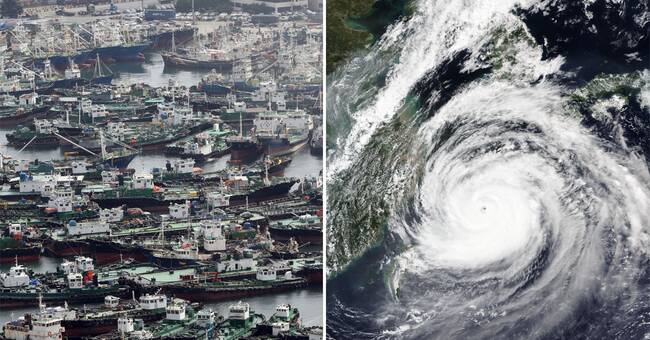The warning was issued on Monday and issued a call to residents of the island of Okinawa in southern Japan to evacuate to "robust buildings" in protection from strong winds.
180 flights from the island were canceled and several schools were forced to close on Monday afternoon, Al-Jazeera reports, citing local media.
20,000 households without electricity
Maysak passed Okinawa on Tuesday with gusts of up to 60 meters per second and has left 20,000 households without electricity.
At present, there is no information on any injuries.
However, the warnings continue to apply because strong winds in the worst case can cause people's homes to collapse, writes AP.
In addition, the institute sees a clear risk of landslides and floods as a result of the storm.
According to earlier forecasts, Maysak would then reach the Japanese island of Kyushu, but the hurricane now instead appears to pass west of Kyushu with gusts of 50 meters per second, according to AP.
Expected to reach South Korea later this week
If the hurricane continues to move north, it is expected to reach South Korea on Wednesday evening, Swedish time.
It is only a week after another hurricane caused problems on the Korean Peninsula, something that affected both South and North Korea.
In South Korea, it is now feared that the hurricane may become even more powerful before it reaches the south coast of the country, and in that case it may be one of the strongest hurricanes that have ever hit the country.
It reports the Korea Herald, which also writes that the authorities' warning was upgraded on Tuesday.
In the past, a long monsoon period during the summer has caused major floods in South Korea.

